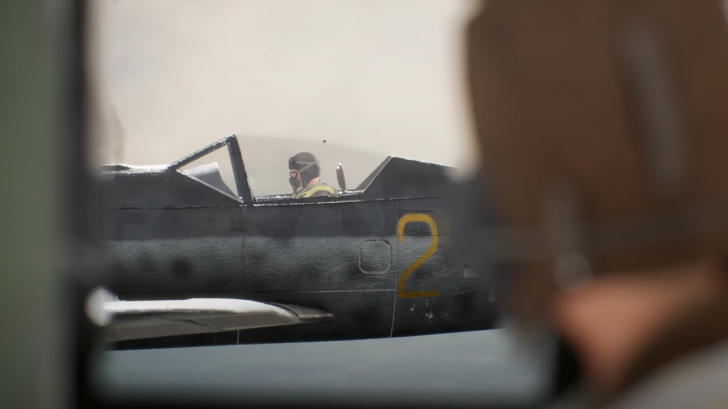On the 6th of June 1943, three squadrons of P-47C Thunderbolts are flying across enemy-occupied France, and at the rear of the formation is 2nd Lieutenant Robert S. Johnson. However, the next thing he knew, he was badly hit.
Danger Ahead
When Johnson looks up, he saw coming down from above them are 16 Focke-Wulf 190s going for the kill. He tries to warn his comrades, but bullets rip through his plane, tearing his canopy down and engine, and sending shrapnel to his thigh.
Life and Death
He tries to bail out, but the canopy gets stuck. Thankfully, the plane dropped to an altitude with safer oxygen levels. He realized that despite the plane’s damage, it was actually flying quite well.
It wasn’t long however when Johnson spots a single yellow-nosed Focke-Wulf 190 coming straight towards him. 20-mm cannon fire strikes the wounded Thunderbolt for the second time.
A Surprising Gesture
The German pilot stops the assault and instead pulls up his wing and flies in close formation. The two pilots looked each other in the eye, and the German gives Johnson a military salute.
Stunned, Johnson gave an unsteady wave of his own. The 190 then pulls away, leaving him to his fate.
A Trap
For a minute, Johnson thought he was spared. But then, he realizes something was wrong.
The 190 didn’t head back, instead, it continued its turnaround towards the P-47’s tail, and cruelly opened fire.
Deadly Encounter
In a state of shock, he looks to the right and sees the German flying alongside him. Then, the German rocks his plane, side to side, flying away, out of ammunition. This time, the 190 left him for good.
Johnson was able to land his plane safely at Manson Air Base, surviving the encounter, and later on becoming the 2nd highest American ace in the European theater. Meanwhile, the pilot who attacked him was German ace Egon Mayer, who would be killed in action a year later.



